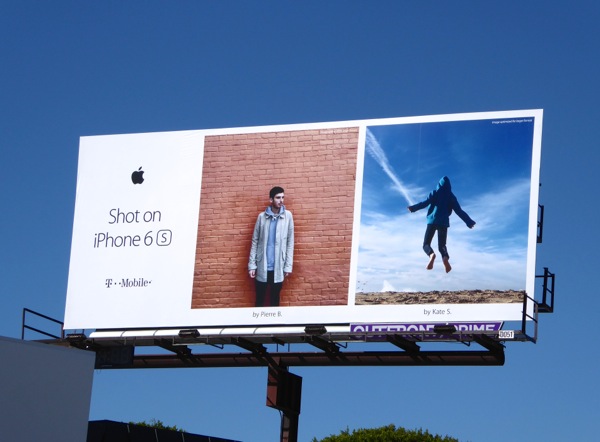Can You Learn Photography With a Smartphone?
You absolutely can.
If you have any device that can capture an image of what’s in front of you, and with which you have at least some control over the composition, focus, and exposure, you sure as hell can learn photography with it. In fact, if your device is a smartphone, it even has some unique advantages over other kinds of cameras, which I will dive into today.
It is no secret at this point that today’s smartphones are capable of taking amazing photographs, but the question I want to really dig into is can learning photography with a smartphone be an on-ramp for more “serious” photography? To be clear, I believe that answer is also “Yes.”
If you’ve been thinking about getting into photography, well, first of all, welcome to my photography blog! But also, I hope you’ll find this article useful as you think about how to start or improve your photography practice.
First, some definitions
When I say “learn photography,” I definitely don’t mean “learn how to be a world-renowned studio photographer.” Studio, real estate, automotive, and product photography are all examples of areas of the craft that are particularly technical, and where your competitors will pressure you to use more specialized tools and techniques. That isn’t to say that you can’t take really nice product photos with a smartphone, but there are limits, so just keep that in mind as you read.
In defense of my position, though, Lee Morris from Fstoppers did a bikini shoot with an iPhone 6S and some cheap accessories like reflectors, a fan, and a flashlight, and proved rather definitively that it can be done well. The reason it worked? Experience and skill behind the camera, composing the shot, directing assistants to configure lighting, directing the model to pose well. So even this is possible, but set your sights realistically.
When I say “smartphone,” I mean a phone made in the last handful of years, with special preference to the iPhone (yes, just about any iPhone), and the Google Pixel line of phones. Among all smartphones in the last bunch of years, those two have had consistently great cameras. You will probably do fine with most other recent phones, but it’s worth mentioning that not all are created equal.
Don’t believe me?
Apple famously ran a huge marketing campaign built on the quality of the iPhone camera, posting up giant ads featuring images taken with an iPhone. Some were produced by pros, controlling every other possible variable, but it certainly showed that a smartphone photograph can be stunning.

For a while, I was challenging myself to take photos with my own smartphone on my morning commutes to work, back when I lived on public transit and the commute involved a lot of “being out in the world.” Here are a couple of my favorites from that period:


View these and many more, much larger, in my Good Morning gallery.
Hopefully this is convincing evidence that a smartphone is “good enough” to make compelling images, so it should be more than good enough to learn some of the fundamentals of photography.
Where to begin
So you have a smartphone and you want to improve your photography “chops.” Excellent! While there is a ton to learn about how to manipulate the world and your equipment to get the effect that you want, all the real work starts inside your head.
The equipment in your hand is useless without knowledge and a vision in your mind. To convert a vision into something compelling, you can apply basic art concepts. Or, going in reverse, art concepts can guide you toward the creation of a new vision.
To learn some of the basics of art, you can begin by reading my three-part series, Art Concepts in Photography, which I posted on this blog some 13 years ago:
- Part 1: Texture
- Part 2: Composition
- Part 3: Positive/Negative Space
I recommend doing your own searches for videos and articles about art and design fundamentals, although at some point you have to just get out there and try it! So, what’s the best way to go about that, then?
Fail early and often
It is said that failure is the greatest teacher. You cannot improve unless you first fail, or recognize a shortcoming that you can strengthen. The process of learning is, at its most basic, a series of attempts wherein you strive for each attempt to be closer to “successful,” or, in the case of your art, “a thing you really like.”
At the beginning of this post, I said that learning photography with a smartphone has unique advantages. I think there are three advantages here that are going to help you learn very rapidly:
- You can see your image immediately, on a screen big enough to be useful
- You can process your image right on your phone and see the results of your edits instantly
- You can share the image with anyone you want and get their feedback, again, essentially instantly
These three things are practically impossible with a DSLR (unless you have the Zeiss ZX1, which can run Lightroom directly on the camera, but let’s be honest nobody has purchased this camera).
By reducing the length of the feedback cycle, you can experiment boldly and quickly hone in on what it is you like or don’t like, what is working and what is not working. For that reason alone, I believe that a smartphone is practically the ideal beginner photography tool.
Conclusions
I hope that I have shown that 1) stunning photography can be made with a smartphone, 2) making a compelling image is more about the observation and skill of the photographer than about the equipment, and 3) smartphones have innate advantages as learning tools that no DSLR can offer.
In the words of Chase Jarvis, “The best camera is the one you have with you.”
Use it.
 Single-Serving Photo
Single-Serving Photo
Comments